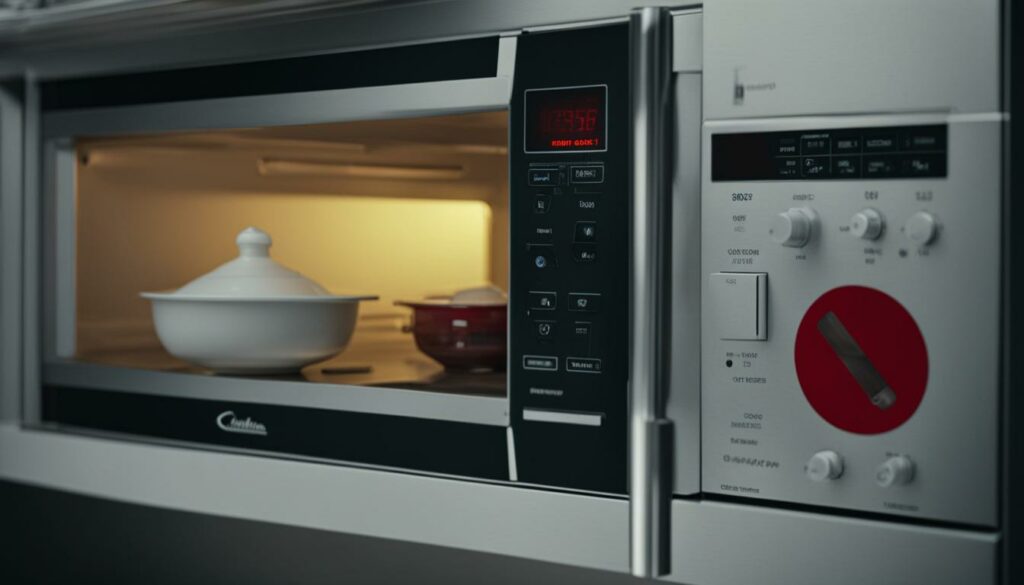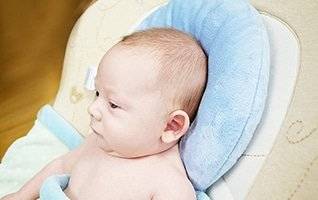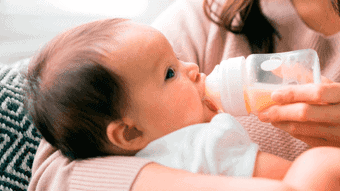As a parent, you want to provide the best for your baby. However, with endless options and conflicting advice, it can be challenging to distinguish between what your baby truly needs and what they want. Understanding the difference between these two concepts is crucial for confident decision-making when it comes to parenting your little one.
In this comprehensive guide, we will explore the concept of baby needs versus wants and provide you with the information you need to make informed decisions for your baby’s happiness and growth. From diapers to playtime, we’ll cover all the essential needs and wants of a baby, ensuring that you have a solid understanding of what your baby requires.
Key Takeaways
- Understanding the difference between baby needs and wants is crucial for confident parenting decisions.
- This comprehensive guide will cover all essential needs and wants of babies, from diapers to playtime.
- By the end of this guide, you will have a better understanding of what your baby requires for their overall well-being and happiness.
- Remember that every baby is unique, so trust your instincts and enjoy this special journey of parenthood.

Diapers: A Baby’s Basic Need
One of the essential needs of a baby is maintaining proper hygiene and comfort, and that’s where diapers come in. Diapers help to keep your baby clean and dry, protecting their delicate skin from rashes and infections. With so many options available, choosing the right diaper for your baby can be overwhelming.
When it comes to diapers, you have two main choices: disposable or cloth. Disposable diapers are convenient and easy to use, making them a popular choice among parents. Cloth diapers, on the other hand, are eco-friendly, cost-effective, and gentle on a baby’s skin.
Regardless of what type of diaper you choose, make sure it fits your baby comfortably to prevent any leaks or discomfort. When buying disposable diapers, keep in mind that babies grow fast, so consider buying a size up for a longer-lasting fit.
In addition, many diaper brands offer features such as wetness indicators, adjustable tabs, and hypoallergenic materials. These features can make diaper changes easier and more comfortable for both you and your baby.
It’s important to change your baby’s diaper frequently to avoid diaper rash and discomfort. For newborns, this may mean changing their diaper every two to three hours. As your baby grows, you may be able to wait longer between diaper changes.
Overall, choosing the right diaper can make a significant difference in your baby’s comfort and well-being. Whether you choose disposable or cloth, make sure to change your baby’s diaper frequently and select a size that fits well. With the appropriate diaper, you can provide your little one with the comfort and care they need.
Feeding: Meeting Your Baby’s Nutritional Needs
One of the most important aspects of caring for your baby is meeting their nutritional needs. There are various options for feeding your baby, including breastfeeding, formula feeding, and introducing solid foods. Here, we’ll explore each option and provide tips for selecting the best one for your baby.
Breastfeeding
Breast milk provides the ideal nutrition for babies and offers numerous health benefits. It contains essential antibodies and nutrients that can protect your baby from illness and promote their growth and development. Breastfeeding also promotes bonding between you and your baby. To ensure success, seek guidance from a lactation consultant, nurse, or doctor, and follow a healthy diet.
Formula Feeding
If you’re unable to breastfeed or choose not to, formula feeding is a safe and viable option for your baby. Formula provides all the necessary nutrients and can be easily digested. It is available in different types, including powder, liquid concentrate, and ready-to-feed. Consider the convenience and cost when choosing the type that suits your lifestyle.
Introducing Solids
Introducing solid foods to your baby’s diet is a gradual process that typically begins at around six months old. Start with single-ingredient purees, such as mashed bananas or sweet potatoes, and gradually introduce new foods while monitoring for any allergic reactions. Avoid giving honey, cow’s milk, and foods that can cause choking hazards.
Choosing Bottles and Nipples
If you choose to formula feed or pump breast milk, select bottles and nipples that are safe, comfortable, and effective for your baby. Bottles come in various shapes and sizes, and nipples are available in different flow rates to suit your baby’s age and feeding pace. Experiment with different brands and styles to find the best option for your baby.
Remember, every baby is unique, and their nutritional needs may vary. Consult with your healthcare provider and trust your instincts when making feeding decisions for your little one.
Clothing: Dressing Your Baby in Style and Comfort
Babies grow quickly and need appropriate clothing to stay comfortable and protected from the elements. When choosing clothes for your baby, keep in mind that they should be practical, easy to clean, and comfortable for your little one to wear.
Since babies grow at different rates, it’s important to keep track of their size and choose clothes accordingly. You can use our size chart to help you select the appropriate clothing size for your baby.
Size Chart
| Size | Age | Weight | Height |
|---|---|---|---|
| Newborn | 0-3 months | up to 10 lbs | up to 22 in |
| 3M | 3-6 months | 10-16 lbs | 22-24 in |
| 6M | 6-9 months | 16-20 lbs | 24-26 in |
| 9M | 9-12 months | 20-24 lbs | 26-28 in |
| 12M | 12-18 months | 24-28 lbs | 28-32 in |
When selecting fabrics for your baby’s clothes, choose materials that are soft and gentle on their sensitive skin. Opt for breathable materials like cotton, which can help regulate your baby’s body temperature and prevent overheating.
It’s also important to consider the weather and season when selecting clothes for your baby. Dress them in layers during colder months to keep them warm and cozy, and choose lightweight, breathable clothing for warmer weather to prevent heat rashes or discomfort.
When it comes to styling your baby, there are endless options available! You can dress them in cute and trendy outfits, or keep it simple with basic onesies and leggings. Remember to prioritize comfort over fashion, ensuring that your baby is comfortable and happy in whatever they are wearing.
Sleep: Creating a Safe and Soothing Environment
Quality sleep is an essential factor for your baby’s overall well-being and development, and creating a soothing sleep environment can help your baby fall asleep faster and sleep better. One of the most important items for a baby’s sleep environment is a crib that meets safety standards.

The crib should have a firm and flat mattress that fits snugly, without gaps or spaces. Avoid placing soft objects like toys, blankets, and pillows in the crib, as they can increase the risk of suffocation. Instead, dress your baby in appropriate sleepwear and place them on their back to sleep.
When selecting a crib, consider factors such as durability, versatility, and cost. Some cribs can be converted into toddler beds or even full-sized beds, which can save you money in the long run. There are also portable cribs available that can be easily moved from room to room or even taken on trips.
Creating a soothing sleep environment can also involve using calming sounds and dim lighting. A sound machine can simulate the sounds of nature, white noise, or lullabies, creating a relaxing atmosphere that can help your baby fall asleep faster. A nightlight or dim lamp can provide a soft glow that can comfort your baby during the night.
In summary, providing a safe and soothing sleep environment is a vital part of meeting your baby’s needs. Choosing the right crib, mattress, sleepwear, and soothing aids can help your baby experience quality sleep, which is crucial for their overall well-being and development.
On the Go: Ensuring Your Baby’s Safety and Convenience
Getting out and about with your little one can be an exciting adventure, but it’s important to consider their safety and comfort when on the go. When it comes to choosing the right car seat and stroller, there are a few things to keep in mind.
Car Seats
Choosing the right car seat for your baby is essential to keep them safe while traveling in a car. Look for a car seat that fits your baby’s weight and height, and ensure that it’s installed correctly in your vehicle. You may also want to consider a convertible car seat that can grow with your child.
Remember to never place a rear-facing car seat in the front seat of a car with an active passenger-side airbag. It’s also important to follow the manufacturer’s instructions and replace your car seat if it’s been in an accident or is expired.
Strollers
A stroller is a useful tool when traveling with your baby. Look for a stroller that is lightweight, easy to maneuver, and is suitable for your baby’s age and weight. You may also want to consider a stroller with adjustable handles, a sunshade, and storage compartments for added convenience.
When selecting a stroller, think about your lifestyle and the types of activities you’ll be doing with your baby. If you plan on jogging or hiking with your baby, consider a stroller with larger wheels that can handle rough terrain.
On-the-Go Essentials
When traveling with your baby, it’s important to bring along some essential items to ensure their comfort. Consider packing a diaper bag with diapers, wipes, a change of clothes, a blanket, bottles or sippy cups, snacks, and toys for entertainment. You may also want to consider a baby carrier or sling for added convenience.
Remember, safety should always come first when it comes to traveling with your little one. By choosing the right car seat and stroller, and packing the right essentials, you can make sure your baby stays safe and comfortable on all your adventures together.
Mealtime: Nurturing Healthy Eating Habits
Mealtime is an essential part of your baby’s day, and a high chair is a crucial tool for making it a positive experience. With a high chair, your baby can sit at the table with you and develop important social skills. It also keeps your baby safe and secure while you prepare and serve food.
| Benefits of a high chair for your baby: |
|---|
| Encourages proper posture and supports back and neck development. |
| Helps develop fine motor skills through self-feeding. |
| Promotes independence and confidence by allowing your baby to eat on their own. |
When introducing solids, it’s important to offer a variety of healthy options and be patient as your baby learns to eat. Start with simple purees and gradually introduce more textures and flavors. Remember to always supervise your baby during mealtime and avoid foods that pose a choking hazard.
Creating a positive mealtime environment is a great way to foster healthy eating habits. Try to make it a fun and interactive experience by using colorful plates and utensils, and encouraging your baby to touch and explore their food. This can help develop their sensory skills and encourage them to be more adventurous eaters.
Remember, every baby is different, and it’s important to follow your baby’s cues and respond to their needs during mealtime. With a high chair and a nurturing environment, you can help your baby develop healthy eating habits that will last a lifetime.

Playtime: Stimulating Your Baby’s Development
Play is an essential part of your baby’s development, allowing them to explore and learn about the world around them. Choosing the right toys and playpen can foster creativity and imagination, help develop motor skills, and encourage socialization.
Choosing the Right Playpen
A playpen is a safe and convenient space for your baby to play in. When selecting a playpen, consider the size, material, and features. Look for a playpen that is sturdy, has a secure locking mechanism, and is big enough for your baby to move around comfortably.
| Pros | Cons |
|---|---|
| Safe and secure space for play | May be expensive |
| Portable and easy to move | May limit your baby’s movement and exploration |
| Provides a designated play area | May not be as stimulating as an open space |
Age-Appropriate Toys
The right toys can help with your baby’s development. Choose toys that are safe, non-toxic, and suitable for their age and stage of development. For example, newborns will benefit from toys that stimulate their senses, such as soft toys with different textures and bright colors. As they get older, toys that encourage movement, such as balls, blocks, and musical instruments, can help develop their motor skills and hand-eye coordination.
- Soft toys with different textures and bright colors
- Rattles and teethers
- Activity gyms and playmats
- Blocks and shape sorters
- Balls and push toys
Making Playtime Safe and Fun
It’s important to make playtime safe and enjoyable for your baby. Always supervise your baby during playtime, and choose toys that are appropriate for their age and development. Keep small objects and toys with sharp edges out of reach, and make sure your baby’s play area is free from hazards. With the right toys and playpen, playtime can be a fun and stimulating experience for your baby.
Comfort and Security: Meeting Emotional Needs
Babies have needs that go beyond the physical essentials like food, clothing, and sleep. Providing emotional comfort and security is just as important for a baby’s happiness and well-being.
One of the most vital emotional needs of a baby is love and attention from their caregivers. Showing affection through cuddles, kisses, and gentle words can help your baby feel safe and secure. It also supports their emotional and cognitive development.
A pacifier, blanket, or stuffed animal can provide additional comfort to a baby. These objects can help soothe and calm your baby, especially during sleep times or other stressful situations.
| Comfort Object | Benefits |
|---|---|
| Pacifier | Can help soothe and reduce the risk of Sudden Infant Death Syndrome (SIDS) |
| Blanket | Provides warmth and comfort |
| Stuffed animal | Can provide a sense of security and comfort |
It’s crucial to ensure that these objects are safe and suitable for your baby’s age and development. Avoid attaching anything to the pacifier or adding toys or extra padding to the crib, as this can pose a risk of suffocation.
By meeting your baby’s emotional needs, you can promote a sense of security and comfort, which can lead to a happier and healthier baby.

Sensory Stimulation: Engaging Your Baby’s Senses
As your baby grows, sensory stimulation plays an essential role in their cognitive and physical development. It provides them with the opportunity to learn and explore the world around them and helps in developing their senses.
Music: Playing soft, soothing music can help relax and calm your baby. You can also introduce them to various genres of music to stimulate their auditory senses.
Colors: Incorporating bright and bold colors in your baby’s environment can help in developing their visual senses. Using simple picture books or mobiles with vivid colors or contrasting patterns can help in engaging your baby’s attention.
Lights: You can engage your baby’s visual senses with twinkling lights. You can use flashing toys or incorporate small lights in their play area.
Movement: Movement is helpful in developing your baby’s vestibular senses. You can help your baby with gentle rocking or swaying movements, or even putting them in swings or bouncers.
| Sensory Stimuli | Benefits |
|---|---|
| Music | Calms and relaxes the baby; stimulates auditory senses |
| Colors | Develops visual senses; helps in engaging baby’s attention |
| Lights | Engages visual senses; helps in visual tracking |
| Movement | Develops vestibular senses and helps with balance and coordination |
Remember, every baby is unique, and what works for one may not work for another. Sensory stimulation should be performed in moderation and never overwhelm your baby. Always watch for signs of overstimulation, such as fussiness or crying, and adjust the stimuli accordingly. Incorporating sensory stimulation in your daily routine can help your baby explore and engage with their surroundings and promote their development.
Conclusion
Congratulations on making it to the end of this guide! By now, you have a better understanding of the difference between your baby’s needs and wants. Remember, as a parent, it’s essential to cater to your baby’s basic needs and provide for their overall happiness and growth.
Taking It One Day at a Time
Parenting can be overwhelming, but taking it one day at a time can make all the difference. As you navigate through the various stages of your baby’s development, trust your instincts, and don’t be afraid to ask for help. Remember, what works for one family may not work for another.
Enjoying the Journey
Parenthood is a special journey filled with ups and downs. While it can be challenging at times, it’s essential to cherish every moment and enjoy the journey. Watching your baby grow and develop into their unique selves is one of life’s greatest joys.
We hope that this guide has provided you with the information you need to confidently make decisions for your little one. From diapers to playtime to emotional needs, every aspect of your baby’s life is important. By providing for their needs and catering to their wants, you can help them thrive and become the best version of themselves.
FAQ
Q: What is the difference between baby needs and wants?
A: Baby needs are essential for their health, growth, and development, such as food, clothing, and sleep. Baby wants are things that may bring them joy or comfort, like toys or special treats.
Q: How can I determine what my baby needs?
A: Pay attention to their basic necessities, like hunger cues, diaper changes, and sleep patterns. If they are meeting these needs, they are likely getting what they require to thrive.
Q: What are some common baby needs in terms of feeding?
A: Common baby feeding needs include breast milk or formula for infants, introducing solid foods as they grow, and ensuring they have proper bottles and nipples for feeding.
Q: How do I choose the right diapers for my baby?
A: Consider factors such as your baby’s size, skin sensitivity, and your preference for disposable or cloth diapers. It may take some trial and error to find the best fit for your little one.
Q: What should I look for when selecting a crib for my baby?
A: Look for a crib that meets safety standards, has adjustable mattress heights, and is made of sturdy materials. Ensure the spacing between crib slats is safe to prevent any potential injuries.
Q: Is it necessary to use a high chair for mealtime?
A: While not essential, a high chair can provide a safe and convenient space for your baby to eat. It also helps establish a routine and positive association with mealtimes.
Q: What are some important safety considerations for traveling with a baby?
A: It is crucial to have a properly installed car seat that meets safety standards. Additionally, choose a stroller with appropriate safety features and ensure your baby is securely strapped in.
Q: How can I provide comfort and security to my baby?
A: Showing love and attention, providing comfort objects like pacifiers, blankets, and stuffed animals, and creating a nurturing environment can help meet your baby’s emotional needs.
Q: What are some ways to stimulate my baby’s development during playtime?
A: Use age-appropriate toys, playpens, and provide a safe play environment that encourages exploration, movement, and interaction. Singing, talking, and reading to your baby can also stimulate their development.
Q: How can I engage my baby’s senses for sensory stimulation?
A: Introduce your baby to different sights, sounds, textures, and experiences. Play soft music, use colorful toys, provide lights, and engage in activities that involve movement to stimulate their senses.




